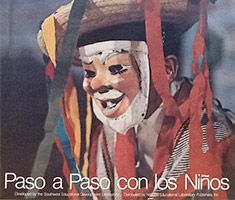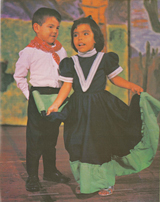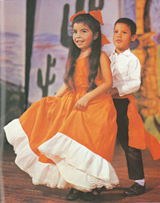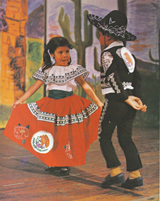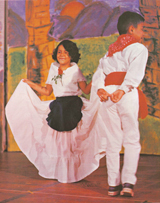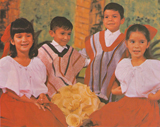Paso a Paso con los Niños
Paso a Paso con los Niños (Step by Step With the Children)
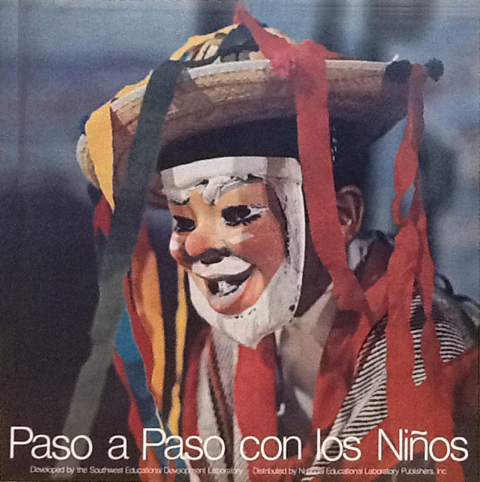
About This Resource
Materials from Paso a Paso con los Niños provide the opportunity to involve children directly in folkloric performance, affording them both a social and an aesthetic experience. By giving children a positive appreciation of their own culture, the materials help extend children's self-image and self-esteem. Developed for Spanish-speaking children, Paso a Paso materials would also enhance the language development and cultural awareness of other groups of children.
Companion Products
These recordings (originally published as a set of three LP records in 1970) have a companion product: Paso a Paso con los Niños (Step by Step with the Children), a book containing the Spanish and English words to the 46 Mexican songs included on the records. The book contains directions for performing traditional dances and pictures of children in native costumes. Also suitable from the publisher for demonstration is a 30-minute color film of a Paso a Paso performance.
Listening to the Songs
You can use the left-side navigation menu to navigate between the songs from the three LP records. Click here to begin by listening to the songs on record one.
Preface
Educational research has shown that the years of early childhood are the optimal time for improving a child's physical, social, emotional, and intellectual potential. Research has also revealed that children from low income families possess intellectual, social, and affective strengths different from those of more economically advantaged children, and that they can benefit from educational programs that build upon these strengths through development of the child's self-awareness, self-esteem, and cultural pride.
Perceptual, cognitive, affective, and language skills are emphasized in the Southwest Educational Development Laboratory's Bilingual Kindergarten Program. The oral language activities are designed to support the development of the thinking process. For children who speak Spanish at home, the approach is bilingual, with materials being presented in both Spanish and English.
The effectiveness of the program materials has been evaluated at every step of the development process—design test, pilot test, and field test. After each evaluation, appropriate changes and improvements were made in the curriculum. The Bilingual Kindergarten Program is part of the Laboratory's total effort to serve as an agent for educational change by developing programs for general school use, with the initial focus upon specific segments of the population.
James H. Perry
Executive Director
Disclaimer
Produced by the Southwest Educational Development Laboratory and supported in part by contracts with the National Institute of Education and the Office of Education, Department of Health, Education, and Welfare; and the Texas Education Agency. The opinions expressed in this publication do not necessarily reflect the position or policy of the National Institute of Education, the Office of Education, or the Texas Education Agency, and no official endorsement should be inferred.
Copyright
© 1970, 1971, 1973 by Southwest Educational Development Corporation
Becomes public domain after September 1978
Next Page: Paso a Paso con los Niños - Record 1: Side A
